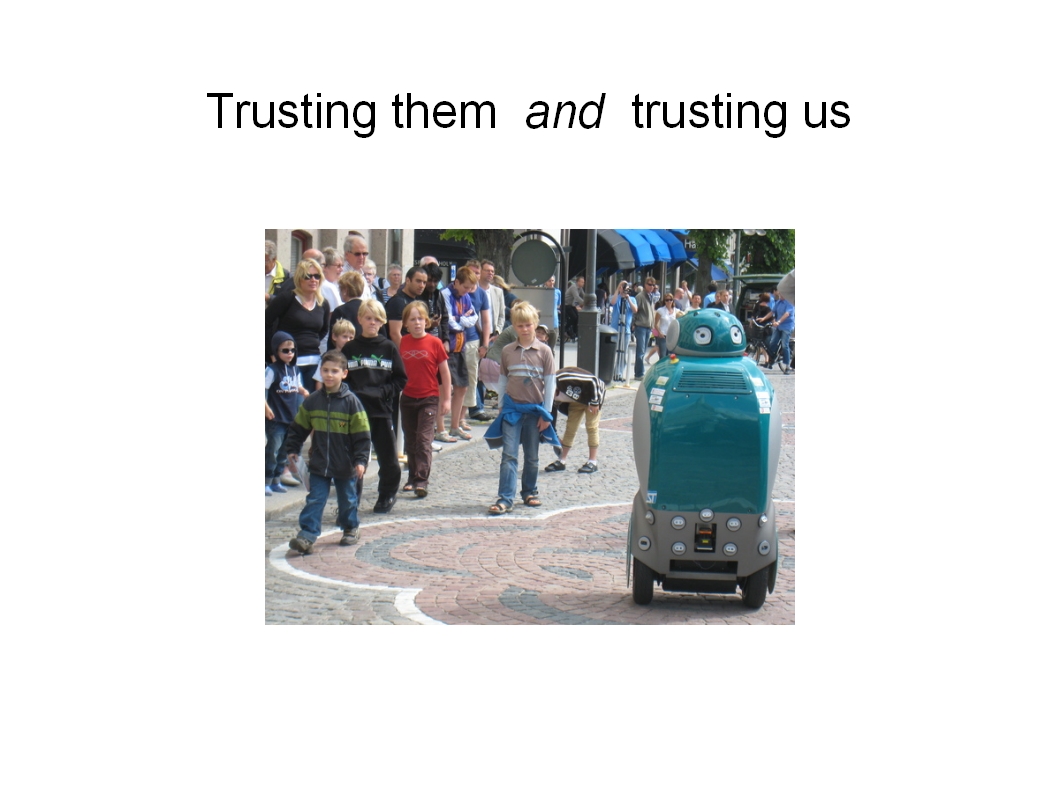Points to summarize:
While this lecture is designed to 'show and tell', the key developments in assistive robotics and the making of human-like machines, a number of issues are raised with respect to the implications these developments have for our understanding of behaviour, sociality or emotionality. For example, companion-robots have caused a stir among ethicists who warn that 'mere machines' cannot replace human contact—who argue that cultivating deceptive "companionships" between robots and vulnerable persons is unethical. There are implications as well which turn on issues of trust and control or the hierarchy of values in our societies. Developments in assistive robotics could significantly improve the lives of vulnerable people. They could greatly improve rescue operations, the monitoring and management of infrastructures or the natural habitat. They also make possible new kinds of explorations which have practical applications—underwater, underground, on other planets or inside the human body. But these developments are also captured by security rationale with heritage in military operations. Equipping assistive robots with advanced sensory and information-handling capabilities opens the door to new forms of surveillance and mobility control, with implications for the protection of rights and liberties. Not only are robots designed specifically for law enforcement, traffic management or other public safety operations which already entertain the option of equipping them also with non-lethal weapons. Robots, designed for seemingly benign purposes such as helping around the home, picking up rubbish, guiding people in the streets, providing porter assistance, and so on, are in one way or anther monitoring the terrain they operate in with a wide range of possibilities to collect data (including biometrics), analyse these data and broadcast them. Major concerns here revolve around adequate protection of personal data, control over which data are collected, by whom and for what purposes, clarifying who owns these data and how data-handling is made subject to accountability. Another set of concerns revolves around liability issues and internal security. What happens when assistive robots malfunction? What if employees of various agencies take advantage of their access to the controls of a robot? What happens if a working robot is harassed at work? Are they ready to operate among us and to be operated by us in ordinary settings, and are we ready to accept them among us?
Finally, robotics development continues to serve as a tool to test our theories but, also, our symbolic relationship with robots as particular kinds of machines continues to serve as a screen image upon which we project our understandings of ourselves, face our biases and prejudice. Again, creative and artistic imaginations can shed light on some of the ways in which we are drawn into this symbolic relationship, for example, the project 'Beggar Robot'.
